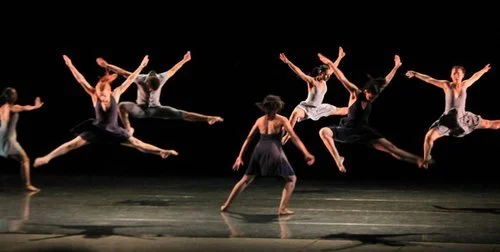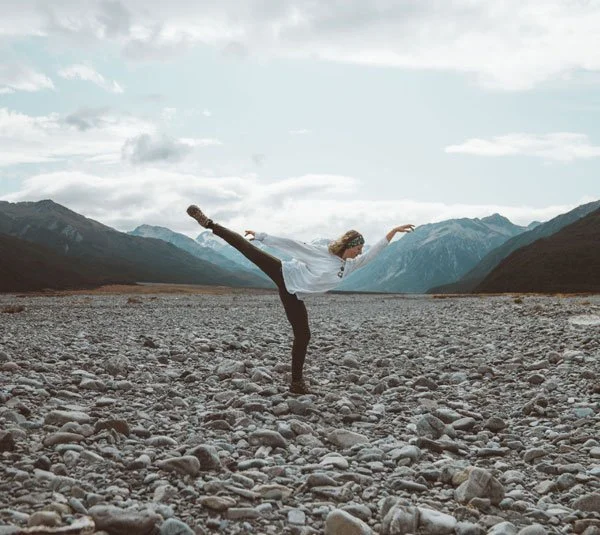REDISCOVERING DANCE AFTER INJURY
By Coach Masha
Approximate Reading Time: 4-6min
There’s a certain identity that comes with being in a professional sport of any kind. Professional Ballet, like most elite sports, is its own world full of hard work, grit, beauty, resilience, and unfortunately, many injuries. The identity of being a ‘dancer,’ of pursuing a singular path from as early as six years old, can take a toll when all of a sudden an injury causes the rug to be pulled from under you.
Six years after quitting professional dance due to a hip injury, I am rediscovering a newfound purpose and connection to movement; movement on my own terms. Restore Human has been integral in re-establishing what strength, grace and resilience looks like in my body and has helped me open up the vistas of professional dance again.
MY BACKGROUND IN DANCE
I started ballet young. I competed, won awards and ended up training and performing professionally in Toronto, San Francisco, Germany and the Netherlands. When a recurring hip injury, which began in my teen years, began compounding with other injuries, my hopes of dancing in a ballet company were squashed.The pain began outweighing my love for dance and it all became too much.When I was 18, I decided the health of my body was the most important thing and I quite professional dance, and started my Kinesiology degree at UBC. While I stand by my choice, leaving dance was, and continues to be, one of the most long and difficult transition periods of my life.
During this transition period, I have found myself thinking many times, if I can no longer dance professionally and I am no longer training to be a dancer, am I still considered a dancer? This is who I have always been. Without dance, who am I?
With the grief I was experiencing from leaving dance being worse than any of the physical pain I had faced from injury I was lost and empty. Dance was my sense of purpose, and without it, there was a massive void building inside me, longing to be filled. Going to drop-in dance classes, which I did in attempts to fill the void, became a painful reminder that I couldn’t pursue my passion professionally.
I began teaching ballet to children, but this turned out to just be a painful reminder of my years of training, hard work and dreams never coming to fruition. Making friends outside of dance, for the first time in a decade, also felt like a reminder that I was no longer a part of the group of people,my people, who had felt like home to me my whole life.
However, the discipline that I acquired through ballet served me well. With my decision to leave professional dance, came the privilege of getting my bachelors degree in Kinesiology, 3 certifications in the health-field, serving as President of a student club, starting my own business, learning to snowboard along with learning other dance styles, hiking around British Columbia, and travelling the globe.
But, five years later, having graduated university and reflecting on those amazing opportunities, I still felt like something was missing. It wasn’t enough. The void inside me was ever present and my feeling of longing was stronger than ever.
REDISCOVERING MOVEMENT
A few months ago, I finally admitted to myself that despite my best efforts, I missed dance. Professional dance. I missed the training, the artistic expression, the euphoria of performance, but most of all, the consistent connection with artists and dancers.
I had also realised that despite all of the achievements I accomplished in these past few years I was left still empty, searching for fulfilment in places where I wasn’t going to find it.
So, in late 2022, in my mid-twenties, I decided to forge my own path with dance. I applied for a training scholarship to EDAM- a contemporary dance company in Vancouver. Once getting accepted, I started training 4 times a week, in contemporary dance and contact improvisation skills.
This was the first step in a wider vision I see for myself: becoming a freelance contemporary artist that has a diverse skill set of dance, improvisation and theatre. An ideal compromise between pursuing my professional career in Kinesiology and still having the opportunity to perform and contribute to the Arts.
Recently, I was speaking of my journey to an old friend of mine when visiting Toronto over the holidays and he said something along the lines of:
“This seems like a beautiful opportunity to make dance your own.”
That phrase has stuck with me. I think it’s an empowering one that more dancers need to hear. In my experience, ballet’s culture can often be rigid and conformist and while my childhood dream had always been to work in a professional ballet company, I have started to wonder; maybe I was redirected for a reason. Maybe these recurring injuries were a ‘beautiful opportunity’ to re-evaluate how I wanted to be a part of the dance world. What impact did I want to leave? Although this idea is a path less travelled, it is one, that after years of deliberations, mental and physical therapy, and finally feeling strong enough to dance again, I deem worthy of exploration.
RESTORE HUMAN’S ROLE
Recently, I have been fortunate enough to be mentored and work at Restore Human which has profoundly changed the way I view ‘fitness’ and ‘exercise.’ Restore Human employs a very mindful approach to movement that I resonate with, especially considering my diverse background in dance, yoga and mindfulness. One of the models commonly used to address pain (and almost anything else) at Restore Human is the ACHE model. It continues to help me address the various aches and pains that come with being a dancer. It stands for:
Awareness
Curiosity
Habituation
Evolution
First, the Awareness piece comes in. It is important to be aware of and understand sensation in your body, becoming aware of the pain signals, and when and where they happen. General body awareness (something that we are always working on at Restore Human) is a fundamental skill in being able to move with efficiency and grace.
The second piece of the puzzle is Curiosity. When I do this movement, does it hurt? What about this? Instead of getting angry at my body for being in pain, can I get curious about how this pain could be an opportunity to get stronger and prevent further damage in the future?
Thirdly, Habituation. Let’s look at some strength and mobility drills to get the body part that is causing you pain, and its surrounding tissue, stronger. Let’s habituate a certain movement pattern that will eventually help it to heal and perform better.
Finally, we see Evolution. Results! Maybe, now, I can run faster, maybe I can lift my leg using my core more which results in feeling less pain in my hip. Whatever it is, it’s a personal evolution in your movement journey.
Using this model I have reframed, and am continuing to reframe, how I look at the various injuries that I face with dancing at a high level again. In turn, this helps inform my approach when helping my clients with their own rehabilitative movement journeys.
FINAL THOUGHTS
I am grateful for my challenging journey with dance. It has taught me that there is a whole world out there to explore outside of dance that is very much worth entering and taking part in. Pursuing my degree has allowed me to understand my own body and injuries better and in combination with my experiential knowledge, has left me with many skills to guide my clients at Restore Human.
Tending to my injuries for over a decade now, has allowed me to become a more mindful mover.This, in turn, has catapulted me into a direction of movement that better aligns with my values of celebrating art, creativity, open-mindedness and expression through the wide lens of human movement. I feel a newfound vitality and freedom to create, dance and move on my own terms, with strength, grace and resiliency.
Banner Image above by Gabriel Saldana



